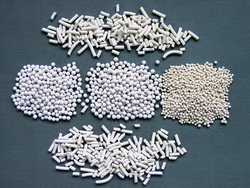You may be familiar with the small packets that prevent moisture and are commonly found in packages and boxes wrapped for shipping. They are called drying agents or desiccants, and they are virtually ubiquitous items in industry and commerce, not to mention everyday life. Although undoubtedly essential in our day-to-day activities, the use of a drying agent requires adherence to a few basic principles.
A drying agent may also be chosen based on its chemical reactivity–or non-reactivity–for that matter. Since a drying agent is normally used for food preservation purposes, the most suitable types for this application are those that are chemically stable or inert. The typical drying agent that falls into this category is typically made of silica gel, chalk or clay-based materials.
A drying agent may also be chosen based on its performance. For determining these qualities, the efficiency of the drying agent to store water is measured in terms of ratio or percentage relative to the mass of the drying agent material.
Finally, the choice of a particular drying agent is commonly determined based on the relative humidity of the immediate environment. This will allow users to determine which drying agent is best suited for a particular package.
Back to Top
The drying agent definition
A drying agent in the form of a desiccant is a hygroscopic substance that works to dry a limited area in its immediate vicinity. They are commonly used in a container that is sealed to a moderate degree. The desiccants that you find in packages are typically in solid pellet or grain form, and they work on the principle of either absorption or adsorption in dealing with moisture. In some cases, you may also encounter a drying agent that performs a combination of the two actions.The purpose of a drying agent
The main purpose of the pre-packaged drying agent is to remove excess humidity that would usually cause a degradation of products that are sensitive to moisture. Some of the most commonly used drying agents are:- silica gel
- activated charcoal
- calcium sulfate
- calcium chloride
Drying agent qualities
There are many qualities of a drying agent that determine its feasibility for specific applications. Some of the factors that have to be taken into consideration are:- toxicity
- chemical reactivity
- performance
- relative humidity of the environment
A drying agent may also be chosen based on its chemical reactivity–or non-reactivity–for that matter. Since a drying agent is normally used for food preservation purposes, the most suitable types for this application are those that are chemically stable or inert. The typical drying agent that falls into this category is typically made of silica gel, chalk or clay-based materials.
A drying agent may also be chosen based on its performance. For determining these qualities, the efficiency of the drying agent to store water is measured in terms of ratio or percentage relative to the mass of the drying agent material.
Finally, the choice of a particular drying agent is commonly determined based on the relative humidity of the immediate environment. This will allow users to determine which drying agent is best suited for a particular package.
Back to Top
Drying Agent

Drying Agent Resources
Sponsored Links
